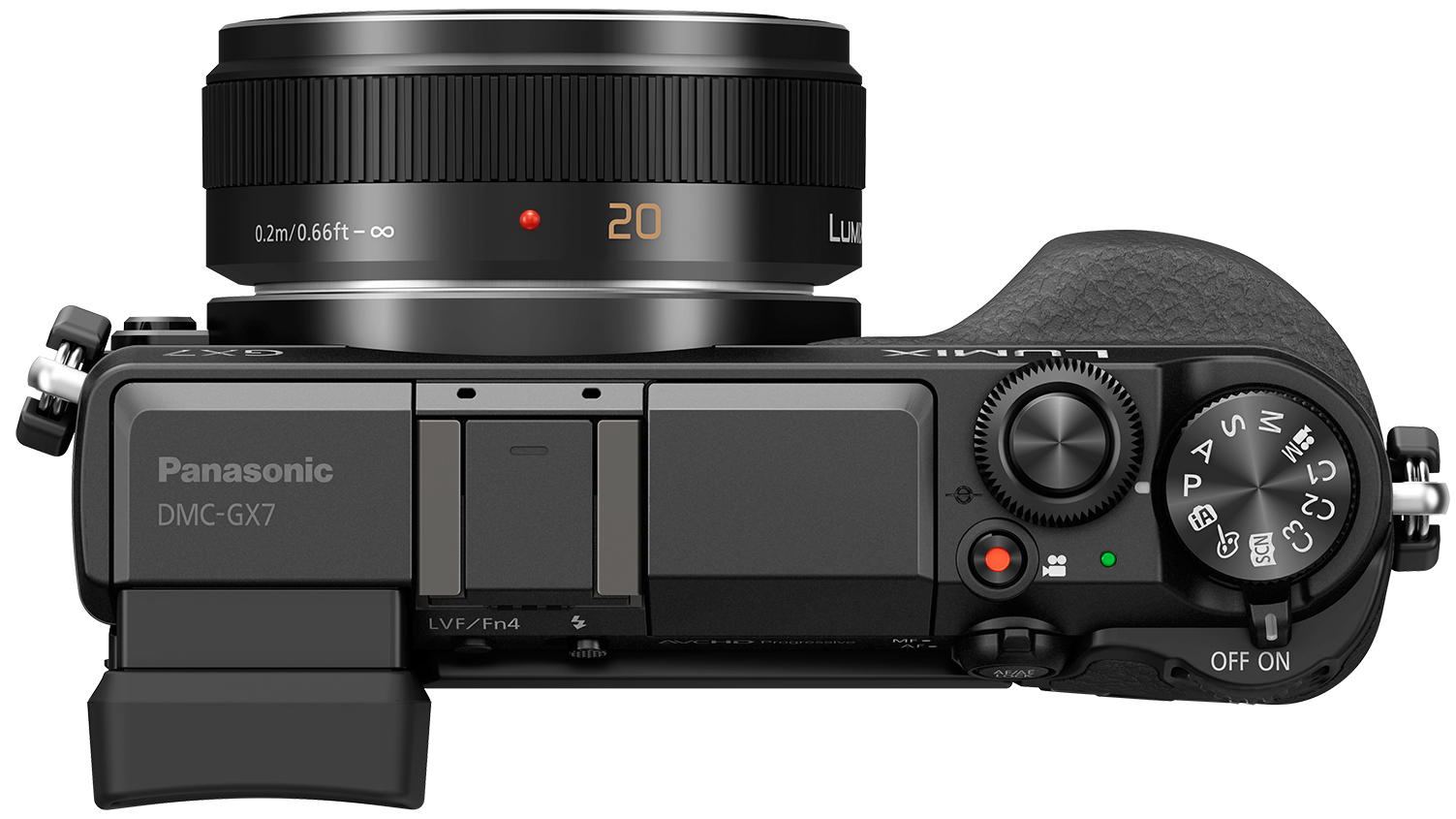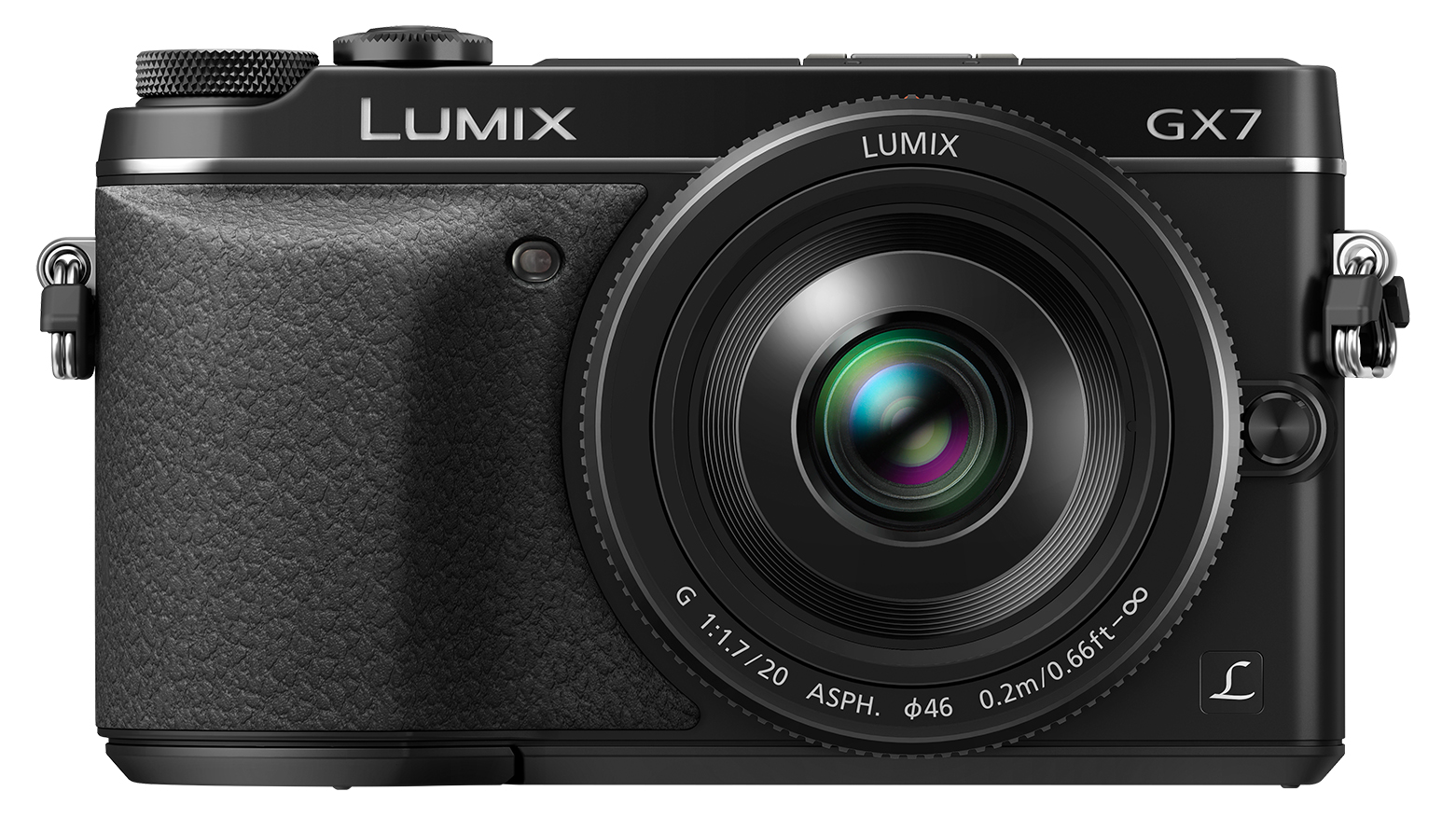TechRadar Verdict
Pros
- +
Touchscreen
- +
Tilting screen
- +
EVF
Cons
- -
Screen isn't articulated
- -
Slow Tracking AF system
- -
Slow viewfinder refresh rate
Why you can trust TechRadar
The Panasonic Lumix GX1 was announced back in November 2011 as a more advanced alternative to the rectangular-shaped GF line of compact system cameras (CSCs) or a smaller alternative to the G series of mini DSLR-style CSCs. The Panasonic Lumix DMC-GX7 is the first update to this range and according to Barney Sykes, Panasonic UK's product manager, the large numerical jump is to signify the progress made with the camera.
Although the Panasonic GX7 has the same pixel count as the GX1 and Panasonic's other recent compact system cameras, the 16MP sensor is new and not the same as the one in the Panasonic G6, Panasonic GF6 or Panasonic GH3.
It's not back-illuminated, but we are told that there's less circuitry on the sensor, which means that there's more space available for the photodiodes and micro lenses, so they're bigger than before. Bigger micro lenses and diodes enable more light to be captured, and this means that the Panasonic GX7's sensor produces a stronger image signal and wider dynamic range images with less noise than previous models.
Panasonic also claims that there's less noise produced by the signal transistors and in the signal transfer process. In addition, the Panasonic GX7 has a new Venus Engine image processor, which enables multi-process noise reduction.

All these factors combine to give the Panasonic Lumix GX7 a 1/2-2/3stop improvement in noise performance in comparison with the G6. Panasonic also claims that video detail resolution is improved.
The Panasonic GX7 body-only price is £819 (US$999 / AU$1,365), while it will cost £899 (US$1,099) with the standard 14-42mm lens included. A kit with a 20mm f/1.7 lens will also be available for £999 (around US$1,530 / AU$1,665).
Features
Although the new sensor should improve image quality, the Panasonic GX7 makes a couple of upgrades to the Panasonic GX1 that may outshine it for some users. The most significant of these for many photographers is likely to be the addition of an electronic viewfinder.
Sign up for breaking news, reviews, opinion, top tech deals, and more.
This 2.76-million-dot device is built into the new camera, but it can be tilted up through 90 degrees to enable you to view scenes more easily from above when shooting at low angles. According to Panasonic this EVF's colour reproduction is a close match for the Adobe RGB colour space, so it should replicate what the sensor captures pretty accurately.

Panasonic has also upgraded the main LCD screen to a 1,040,000-dot unit mounted on a tilting bracket. As before, this is a touch-sensitive device, but it's the more responsive electrostatic type.
Helpfully, a sensor next to the viewfinder detects when the camera is held to the eye and switches off the main screen automatically while activating the EVF. When Eye Sensor AF is activated, the camera starts auto focusing when you look into the finder.
Panasonic has put a lot of effort into improving the autofocus performance of its CSCs, and the Panasonic GX7 reaps the full reward of this with an AF system that is claimed to operate in -4EV (what Panasonic refers to as star light) and has a response time of 0.06 seconds.
As before, there are five AF options; Face Detection, AF Tracking, 23-Area, 1-Area and Pinpoint. However, in Pinpoint mode the Panasonic GX7 shows the enlarged view (from 3x to 10x magnification is available) as a picture-in-picture so you can still see the whole scene, as well as a magnified view of the area around the focus point for easier composition. There's also a picture-in-picture magnification option in manual focus mode for the same reason.

Focus Peaking display is also available on the GX7 and this shows the location of the peak of focus in MF and AF+MF mode. The detection level can be set to 'High' or 'Low' and the colour can be selected to stand out from the shooting environment. In 'High' light blue, yellow or green are available and in 'Low' blue, orange or white can be selected.
Thanks to the new processing engine, the Panasonic GX7 can shoot continuously at up to 4.3fps in continuous AF mode. There's also a top shutter speed of 1/8000sec (like the Olympus PEN E-P5), which should prove useful when using lenses such as Panasonic's Lumix G 20mm f/1.7 II ASPH wide open.
In a break from the norm for Panasonic, the GX7 has in-camera stabilisation. This will activate automatically when non-stabilised optics such as Leica's M lenses are used - which can be mounted via an adaptor - but it's deactivated when Panasonic's OIS lenses are mounted.
To ensure the correct level of correction is applied the photographer can enter a non-stabilised lens's focal length from 8mm to 1000mm.

As we have come to expect, the Panasonic GX7 has a collection of Creative Control filter effects available. These can be used when shooting raw and JPEG images, and, although there's full control over exposure, it's possible to adjust aperture and exposure compensation.
Yellow, brown, red and green filter effects can be used to manipulate contrast when shooting with the Monochrome option, and the image tone can be adjusted across the blue-yellow axis. There's also a Rough Monochrome option that adds granular noise, and a Silky Monochrome option that softens the image.
Like Panasonic's other recent CSCs, the Panasonic GX7 has Creative Panorama mode, which enables panoramic images to be captured while using the Creative Control filter effects.
Interestingly, there's a new option to adjust image contrast prior to capture by manipulating a contrast curve. This can be done by dragging the curve with a finger on-screen or using the physical controls, or by using a preset curve.

Like the Panasonic GF6 and Panasonic G6, the Panasonic GX7 has Clear Retouch feature, which enables objects to be cloned out of images in-camera and could prove useful for those who don't want to edit images on a computer. There's also Time Lapse Shooting and a Stop Motion Animation mode for creating short movies from a sequence of stills.
While Panasonic has improved the GX7's video capability with the addition of a 50p option and focus peaking (also available for stills), there's no external mic port or headphone jack.
In keeping with Panasonic's other recent compact system cameras, the Panasonic GX7 has Wi-Fi communication and NFC (Near Field Communication) connectivity built-in. NFC enables the camera to connect quickly with other NFC-enabled devices such as Android smartphones and tablets, while the Wi-Fi communication makes wireless control of the camera and image transfer possible via an app.
